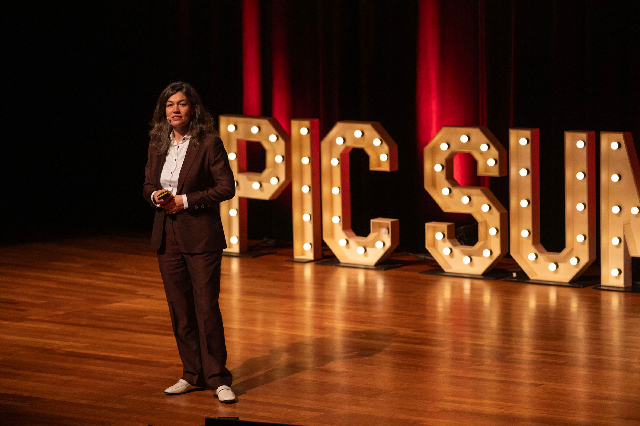PIC Summit Europe 2025Scaling Together in a Dynamic World | Register now! |
The photonic chip industry is reaching new heights—but scaling production, applications, and investments requires a united effort. As demand surges for high-speed, energy-efficient solutions, the question isn’t if photonic chips will revolutionise industries, but how fast we can make it happen.
At PIC Summit Europe 2025, we bring together an entire ecosystem of designers, foundries, integrators, OEMs, investors, and thought leaders—to tackle the industry’s biggest challenges and opportunities. From advancing manufacturing capacity to expanding market applications and securing funding for growth, this event is where the photonic chip industry aligns its vision for the future.

Why Attend?
- Insights straight from the source – Get the latest insights on market and technology developments, helping you navigate the future of PICs with confidence.
- Discover real-world applications – Learn which applications are proving most successful, and where the next big opportunities in photonics lie.
- Meet key stakeholders – Connect with the most influential players in the industry, from technology leaders to business innovators and investors.
- Shape the future of PICs – Gain direction on how to scale your business and technology while aligning with industry-wide efforts. Unlock collaboration opportunities – Whether you're looking for investment, partnerships, or technical cooperation, this is the place to make it happen.
Scaling is not just about technology—it’s about strategy, execution, and collaboration. Whether you’re shaping the next generation of photonic chips or looking to integrate them into your solutions, PIC Summit Europe 2025 is where progress happens. Join us as we scale together in a dynamic world. Secure your spot today! | Register now! |
 |  |  |
LEADERS IN THE PHOTONIC CHIP INDUSTRY
Join start-ups, end-users, investors and academics at PIC Summit Europe
 |  |  |
Photonic chip technologyPIC Summit Europe is all about photonic chip technology and its applications. A technology that harnesses the power of light to create energy-efficient, faster, and more accurate microchips. Join and discover the latest developments. | Rich programme & | Multiple side events & Tech tourPIC Summit Europe hosts multiple side events that will zoom in on current and pressing topics in the photonic chip industry such as talent attraction, startup funding, Quantum Photonics and roadmapping activities. |
| Europe's most influential event in the photonic chip industry. Over 700 visitors from more than 20 countries. Organised and hosted by PhotonDelta - European Integrated Photonics Ecosystem. |  |
What to expect?
DAY 1: | DAY 2: |
| Features a curated mix of keynote speakers and panel discussions on a range of topics such as policy making, the future of chip design and semicon. | Presents industry keynotes exploring the state of the art of applications using photonic chips and a host of side events on topics such as startup funding, talent attraction and more. |
 |  |  |  |
| 60+ | 700+ | 20 | 40+ |
| Expert speakers | Participants | Interactive Sessions | International partners |
 |
Main venue address:Evoluon | Follow us:
  | Powered by:
 |
